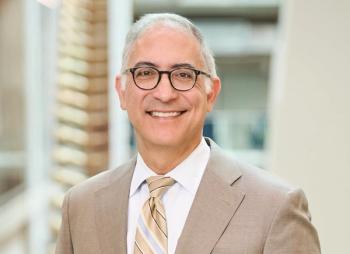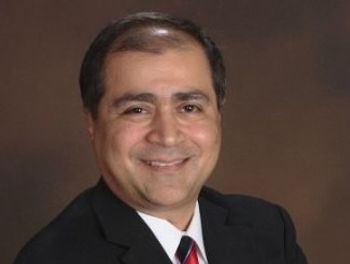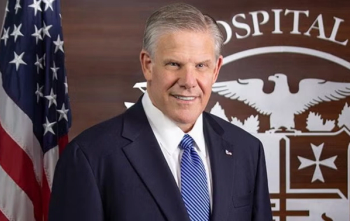
After surviving childhood cancer, a doctor works to help other kids
Dr. Richard Gorlick says his own battle motivated his career. He’s now the head of the division of pediatrics at MD Anderson Cancer Center.
It isn’t hard to understand Dr. Richard Gorlick’s passion to end pediatric cancer.
“I'm a childhood cancer survivor, and that's why I went into this,” Gorlick says.
Now the head of the division of pediatrics at the University of Texas MD Anderson Cancer Center, Gorlick works to ensure other children can have long productive lives.
“Pediatric cancer is exceedingly rare,” he says. “So I think that's the first thing to remember. When you look at the raw magnitude of how many children get cancer versus adults, we are very fortunate that much less children get cancer than adults do.”
But he says, “That creates challenges for things like clinical trials.”
Now, Gorlick is playing an important role in an effort to find new breakthroughs to help children and teens with cancer.
The University of Texas MD Anderson Cancer Center and Texas Children’s Hospital are teaming up
In a recent interview with Chief Healthcare Executive®, Gorlick said the goal has to be to end childhood cancer, even though that’s a monumental task.
“Pediatric oncology has been the success story of oncology overall already,” Gorlick says. “And that sort of belies that there's areas where we need more progress.”
He also talked about his own diagnosis and how that’s driven his work. (See part of our conversation in this video. The story continues below.)
Drive and empathy
Gorlick was only 13 when he was diagnosed with sarcoma, more than 40 years ago.
“Back then, there wasn't something called adolescent young adult oncology, which has really become a recognition that that patient population is even different than traditional pediatrics and older adults,” he says.
“But yeah, I was in that category, and part of the issue is, adolescents never are comfortable with children,” Gorlick adds. “And they're not really comfortable with older adults. And they have unique issues around sort of just developing identity, all of the developmental tasks that sort of occurred during that challenging time.”
Driven by his own experiences, Gorlick has poured himself into research and treatment of childhood cancers. He received the American Society of Clinical Oncology’s Pediatric Oncology Award in 2024.
Gorlick says his own experiences have fueled him and also provided a sense of empathy with his young patients. But he also says he’s careful not to assume that he understands everything a child or teen is experiencing.
“You have to realize that every patient is on their own journey, and every family is on their own journey, and so my experience may not be theirs,” he says. “So, you know, I'm very careful to sort of listen to their story and be part of their journey … But that said, I certainly understand what they're going through. And, you know, I'm very passionate about it needs to be better.
Subhead
Gorlick is thrilled to see MD Anderson partnering with Texas Children’s on the new cancer center.
A facility for the new cancer center will be built on the campus of the Texas Medical Center and connect to Texas Children’s Hospital. But leaders of both organizations are looking forward to expanding their research capacity.
MD Anderson and Texas Children’s have collaborated extensively in the past. He says he has been a longtime friend of his counterpart, Donald “Will” Parsons, MD, interim director of the Texas Children’s Cancer and Hematology Center. But this work will rise to a new level.
“It's not them and us,” Gorlick says. “It's just us, which is going to be much easier.”
“Now us all being one, still part of our own organizations, but at the same time, part of this new entity, allows us to have this feel that every resource that exists within both enterprises is available to the pediatric patients as part of this new venture,” he adds. “So it just makes it an organizational recognition that for pediatric cancer, we're going to work together on everything.”
Gorlick says the goal has to go beyond saving the lives of young people, but to enable them to live better lives after their cancer battle. After all, children who survive pediatric cancer are going to live for decades.
He’d like to see those young people face life with fewer complications from their cancer battle.
“There's a lot of childhood cancer survivors,” he says. “And those childhood cancer survivors have lives with more medical problems than they should, partly related to that cancer diagnosis and partly related to its treatment. And so even where we have treatments that lead to cures, our treatments have to get better.”
- Read more:
New Jersey’s first cancer hospital opens







































